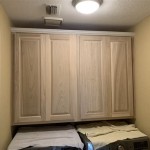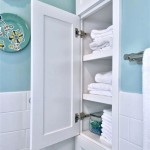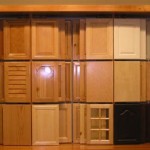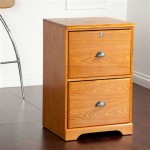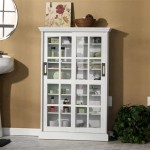How To Clean Grease And Dirt Off Kitchen Cabinets
Kitchen cabinets, particularly those situated near the stovetop, are perpetually vulnerable to the accumulation of grease, food splatters, dust, and general grime. Regular cleaning is essential not only for maintaining an aesthetically pleasing kitchen environment but also for preventing the buildup of stubborn, hardened deposits that can be significantly more challenging to remove over time. This article provides a comprehensive guide to effectively cleaning grease and dirt from kitchen cabinets, encompassing various cleaning solutions and techniques tailored to different cabinet materials and levels of soiling.
The frequency of cleaning kitchen cabinets depends largely on cooking habits and the overall level of activity in the kitchen. Cabinets located directly adjacent to the stovetop may require weekly cleaning, while those further away might only need attention every few weeks. A visual inspection of the cabinet surfaces can provide a reliable indication of the degree of soiling. Signs of grease buildup, food splatters, or a general dullness of the finish are clear indicators that cleaning is necessary.
Before embarking on any cleaning endeavor, it is crucial to identify the type of material your kitchen cabinets are made of. Common materials include wood (painted or stained), laminate, melamine, and metal. The cleaning methods outlined below are generally safe for most cabinet types; however, it is always advisable to test a small, inconspicuous area first to ensure no damage or discoloration occurs. This precautionary measure can prevent potentially irreversible damage to the cabinet finish.
Preparing for the Cleaning Process
Prior to initiating the cleaning procedure, certain preparations are necessary to ensure efficiency and minimize potential mess. First, gather all the required cleaning supplies, which may include: a soft cloth or sponge, a bucket filled with warm water, a mild dish soap or degreasing cleaner, baking soda, white vinegar, a spray bottle, a toothbrush (for cleaning crevices), and paper towels or a clean, dry cloth for drying. Ensure adequate ventilation in the kitchen by opening windows or using a range hood. If the cabinets have handles or knobs, consider removing them to allow for thorough cleaning around these areas. This step is especially beneficial if the hardware is heavily soiled. Cover countertops and flooring around the cabinets with drop cloths or towels to protect them from spills and cleaning solution.
The first step in the cleaning process is to remove any loose debris from the cabinet surfaces. This can be achieved using a soft brush or a vacuum cleaner with a brush attachment. Pay particular attention to corners, crevices, and areas around the cabinet hardware, where dust and crumbs tend to accumulate. Removing this loose debris will prevent it from being smeared across the cabinet surface during the subsequent cleaning steps.
Effective Cleaning Solutions and Methods
Numerous cleaning solutions can be employed to effectively remove grease and dirt from kitchen cabinets. The choice of solution often depends on the severity of the soiling and the type of cabinet material. Several popular and effective solutions are detailed below.
Mild Dish Soap and Warm Water: This is the most basic and frequently used cleaning solution for kitchen cabinets. It is generally safe for all cabinet types and effective for removing light grease and everyday grime. Mix a small amount of mild dish soap (approximately one teaspoon) into a bucket of warm water. Dip a soft cloth or sponge into the solution, wring out the excess water, and gently wipe down the cabinet surfaces. Rinse the cloth frequently in clean water to prevent re-depositing dirt and grease. After washing the cabinets with the soapy solution, rinse them thoroughly with a clean, damp cloth to remove any soap residue. Finally, dry the cabinets with a clean, dry cloth or paper towels.
Baking Soda Paste: Baking soda is a mild abrasive that can effectively remove stubborn grease and stains without damaging most cabinet finishes. To create a baking soda paste, mix baking soda with a small amount of water until a thick paste forms. Apply the paste to the affected areas and let it sit for a few minutes. Gently scrub the area with a soft cloth or sponge in a circular motion. Rinse the area thoroughly with a clean, damp cloth and dry it with a clean, dry cloth or paper towels. Baking soda is particularly effective for removing grease splatters around the stovetop and baked-on food stains.
White Vinegar and Water: White vinegar is a natural degreaser and disinfectant that can be used to clean kitchen cabinets. Mix equal parts white vinegar and warm water in a spray bottle. Spray the solution onto the cabinet surfaces and let it sit for a few minutes. Wipe down the surfaces with a soft cloth or sponge. Rinse the area thoroughly with a clean, damp cloth and dry it with a clean, dry cloth or paper towels. The vinegar smell will dissipate quickly, but if you find it unpleasant, you can add a few drops of essential oil to the solution to mask the odor. Vinegar is especially useful for cutting through grease and removing water stains.
Commercial Degreasers: Numerous commercial degreasers are available specifically formulated for cleaning kitchen cabinets. When using commercial degreasers, it is essential to follow the manufacturer's instructions carefully. Always test the product on a small, inconspicuous area before applying it to the entire cabinet surface. Wear gloves and eye protection when using strong degreasers. These products often contain harsh chemicals, so proper ventilation is crucial. Commercial degreasers are typically more effective for removing heavy grease buildup than homemade solutions.
Oil Soap: Oil soap is a gentle cleaner that can be used on wood cabinets to clean and condition the wood. Follow the manufacturer's instructions carefully when using oil soap. Apply the oil soap to a soft cloth and wipe down the cabinet surfaces. Buff the cabinets with a clean, dry cloth to restore their shine. Oil soap can help to prevent the wood from drying out and cracking.
For laminate cabinets, a simple solution of dish soap and water is generally sufficient. Avoid using abrasive cleaners or scouring pads, as they can scratch the laminate surface. Melamine cabinets can be cleaned with a similar solution of dish soap and water. Metal cabinets can be cleaned with a mild cleaning solution and a soft cloth. Avoid using abrasive cleaners, as they can damage the metal finish. Stainless steel cleaners specifically designed for kitchen appliances can also be used on stainless steel cabinets.
Addressing Difficult Areas and Stains
Certain areas of kitchen cabinets, such as those around the stovetop and handles, tend to accumulate grease and dirt more readily. These areas may require extra attention and specific cleaning techniques.
Cleaning Around Handles and Knobs: Use a toothbrush or cotton swab dipped in your chosen cleaning solution to gently scrub around the handles and knobs. This will help to loosen and remove any accumulated grease and grime. If the handles and knobs are heavily soiled, consider removing them and soaking them in a solution of warm water and dish soap before scrubbing them clean. Rinse them thoroughly and dry them before reattaching them to the cabinets.
Removing Stubborn Grease Splatters: For stubborn grease splatters, apply a baking soda paste or a commercial degreaser to the affected area and let it sit for a few minutes. Gently scrub the area with a soft cloth or sponge. You may need to repeat this process several times to completely remove the grease. A plastic scraper can also be used to gently lift off hardened grease deposits. Be careful not to scratch the cabinet finish.
Dealing with Water Stains: Water stains can often be removed with a mixture of white vinegar and water. Spray the solution onto the stained area and let it sit for a few minutes. Wipe down the area with a soft cloth. You may need to repeat this process several times to remove the stain completely. For stubborn water stains, you can try using a commercial water stain remover specifically designed for wood cabinets.
Key Points for Maintaining Clean Cabinets
Preventative measures are key to minimizing the buildup of grease and dirt on kitchen cabinets, thereby reducing the frequency and intensity of required cleaning efforts.
Regular Wiping: Regularly wipe down kitchen cabinets with a damp cloth to remove any spills or splatters as soon as they occur. This will prevent them from drying and hardening, making them easier to remove later. Focusing on high-splash areas like those nearest the hob will benefit from this process.
Using a Range Hood: Always use your range hood when cooking to vent steam, grease, and odors out of the kitchen. This will help to prevent grease from accumulating on the cabinets and other surfaces.
Protective Measures: Consider using placemats or trivets under hot dishes and appliances to protect the cabinet surfaces from heat damage and spills. Lining cabinet shelves with shelf liner can also help to protect them from spills and stains.
By adhering to these practices, maintaining clean and aesthetically pleasing kitchen cabinets can be more easily achieved, ensuring the longevity and visual appeal of the kitchen space.

How To Clean Sticky Grease Off Kitchen Cabinets Ovenclean

How To Clean Kitchen Cabinets Everyday Skate

How To Remove Grease From Kitchen Cabinets 3 Methods Bob Vila

Clean Kitchen Cabinets Off With These Tips And Hints

How To Clean Grimy Kitchen Cabinets With 2 Ingredients

How To Clean Sticky Grease Off Kitchen Cabinets Infinity

Best Ways To Clean Grease Stains Off Kitchen Cabinets

Degrease Kitchen Cabinets With An All Natural Homemade Cleaner

How Remove Grease From Wood Kitchen Cabinets

How To Clean Sticky Grease Off Kitchen Cabinets
Related Posts


